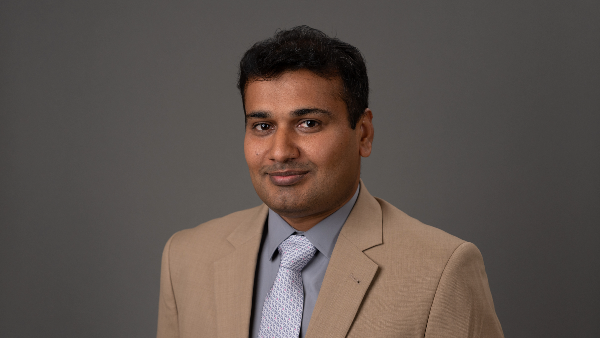As Nafees Qamar, Ph.D., sees it, there's no turning back from technology in healthcare.
With hospitals and office-based physicians moving to near-universal adoption of electronic health records, providers can harness the records’ data to deliver early diagnoses and increase individualized care via predictive analytics, which uses computational power to forecast patient outcomes.
“Predictive analytics makes healthcare proactive rather than reactive, which will help us provide efficient operations and higher-quality services to patients,” says Qamar, an associate professor in the School of Health and Behavioral Sciences and program director for Bryant’s new Master of Science in Healthcare Informatics, which trains analysts to turn data into useable information that will guide healthcare professionals’ decision-making.
Healthcare informatics is a fast-growing field and the university’s program helps students boost individual care and increase operational efficiency. Qamar, whose background encompasses EHR and mobile health solutions to improve personal care and data management, has spent the last 12 years working in higher education and is teaching Bryant’s “Introduction to Healthcare Informatics” and “Electronic Health Records” courses this fall. He notes that while predictive analytics isn’t foolproof in its projections, this technology plays a pivotal role in the future of healthcare.
Digging into the data
Predictive algorithms gather diverse data — such as demographic, medical history, clinical, vital signs, and genetics — and follow a series of complex steps to make projections. Qamar notes that providers now have access to more information than ever, including medication usage, imaging, diagnostic reports, temporal data, and patient-reported information to create a more comprehensive health profile.
Prior to predictive analytics, practitioners relied on clinical judgment, evidence-based practice, medical history, physical examinations, diagnostic testing, recommendations, risk assessment, screenings, patient education, teamwork, and longitudinal care to make early-stage diagnoses.
“These methods are great but have restrictions on the complexity and availability of the longitudinal data,” Qamar says.

Improving health and well-being
Predictive analytics is all around us, whether we recognize it or not.
“Wearable devices like smartwatches can track a patient's heart rate, activity levels, and sleep patterns. Predictive models can use this data to identify anomalies and alert healthcare providers to potential health issues in real-time,” Qamar says, adding now there are mobile apps that use data to estimate an individual's risk of developing diabetes.
With research constantly developing, he notes that the University of Oxford recently identified 11 modifiable risk factors for dementia and created a tool to predict an individual's likelihood of developing the condition within the next 14 years.
“According to the study, their newly developed technique beats existing tools and highlights preventive measures, since up to 40 percent of dementia cases could be prevented by addressing lifestyle factors such as smoking, weight, blood pressure, and alcohol intake,” Qamar says.
Facing a future of prediction
As healthcare data evolves, providers will need training to understand predictive models’ complexities and learn how to question predictions, says Qamar. Analysts are key to helping identify possible solutions to problems and generate efficiencies to enhance the equitable delivery of healthcare.
“Currently, key challenges include data quality and availability, data privacy and security, and bias and fairness that predictive models may have in historical data,” Qamar says. “We have already seen published news stories about that, especially in cases where we found out that the skewed data can exhibit bias in some way.”
He adds that these models must comply with regulatory standards like HIPAA and regular dataset updates are essential for maintaining accuracy.
“Predictive analytics has the potential to empower clinicians and provide a powerful mechanism to spot tiny trends and make precise forecasts for better patient outcomes,” Qamar says, noting that clinicians should still be encouraged to use their expertise while taking advantage of analytics tools and techniques.